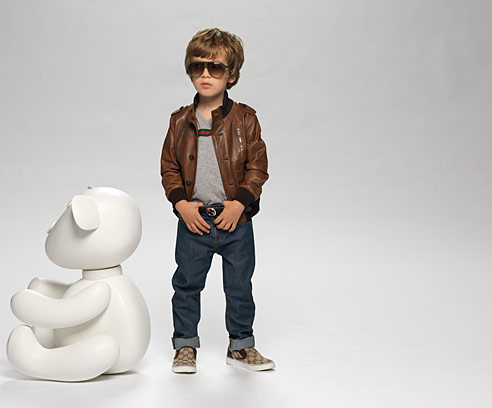
 And he said, “Let the little children come to me.” A New York Times article that gives us an amazing portrayal of the lengths to which we go to accessorize and craft an identity that will justify us. Interestingly, Jesus tells us, like Charles James, that we must become little children: “Most American fashion is based on older women trying to look like babies.” Ironically, this trend towards the accessorization of children, and the fashion industry’s relevance-seeking chops, has inverted the biblical paradigm–and children are becoming adults, way too soon.
And he said, “Let the little children come to me.” A New York Times article that gives us an amazing portrayal of the lengths to which we go to accessorize and craft an identity that will justify us. Interestingly, Jesus tells us, like Charles James, that we must become little children: “Most American fashion is based on older women trying to look like babies.” Ironically, this trend towards the accessorization of children, and the fashion industry’s relevance-seeking chops, has inverted the biblical paradigm–and children are becoming adults, way too soon.
In the last year or two, Lanvin, Gucci, Stella McCartney and Marni have entered the market. A decade ago, Ralph Lauren’s template of a high-end lifestyle brand had few imitators. Dior had Baby Dior, founded in 1967 (before that, the house made outfits for some of its celebrated clients, like Elizabeth Taylor, who ordered matching tweed suits for herself and her young daughter Liza), but the luxury-goods business, with justification, tended to regard itself as an adults-only world. Can you imagine a child’s version of Tom Ford’s Gucci? Versace? It would have interrupted the sex fantasy. And in the late ’90s, these companies were focused on the huge profits reaped from handbags.
Now, children are the new accessory, as once-snooty brands line up to
please conservative-minded millennials while they use tiny garments to strengthen their brand power in regions like Asia. Last year, Burberry sold $91 million in clothing for children — from newborn, including diaper bags covered in Burberry’s beige check, to early teens — for an increase of 23 percent over the previous year. Most of Burberry’s 12 free-standing children’s stores are in Asia and the Middle East.
Seemingly overnight, brands like Oscar de la Renta, Fendi, Marc Jacobs, Roberto Cavalli, Missoni, Milly and Phillip Lim moved into expanded children’s areas of stores, like the new one at Bergdorf Goodman. And while they haven’t exactly pushed aside traditional makers, like the Milwaukee-based Florence Eiseman and Rachel Riley, a British label, they are able to command attention, as well as those hefty designer prices.
“Sometimes I’m just blown away by the price of designer clothes,” Ms. Riley said, adding, “Some of their fabrics are mediocre.” When told that Lanvin’s first collection of children’s wear included a $1,200 tulle shift, with a strand of faux pearls knotted in tulle, a signature of the designer Alber Elbaz, and a trench coat in fuchsia taffeta for $1,570, Ms. Riley made a shuddering noise. Then she said, peeved, as if defending her ground of smock dresses and ballet slippers, “Are they made for children’s bodies?”
Actually, no. They were miniaturized versions of Lanvin’s adult looks, according to Mr. Elbaz.
Ms. Riley said, “Children have big tummies and stand in funny ways.” Although she has made one or two concessions to popular tastes, like making her ballet flats in nail-varnish colors, she remains
fixed in her view that children should be children and not little brand ambassadors or, in the current parlance, “prostitots.” She said: “I can’t bear advertising on children. And why would a child need to have anything remotely sexy? To me, it’s unethical.”
…It’s easy to feel a sense of nausea at such prices and at the idea that children, especially little girls, are being groomed to be future shoppers, though a Gucci bib is scarcely a prequel to a Gucci bag. But it’s also not a new concern, as writers and academics like Daniel T. Cook, an associate professor of childhood studies at Rutgers University, Camden, have observed.
“So much of kids’ and parents’ lives, compared to the early ’60s, is centered around commerce and the media,” Mr. Cook said. “It’s kind of the lingua franca.” More interesting to him is how high-end brands, with all of their celebrity dazzle and easy entry points (children’s clothing is one), feed a transnational middle class, with the same styles appearing in Paris and Beijing as in Rio. “There is a kind of global childhood that’s starting to emerge with the professional classes in the world,” he said. “Clothing is related to that.”

COMMENTS
Leave a Reply












